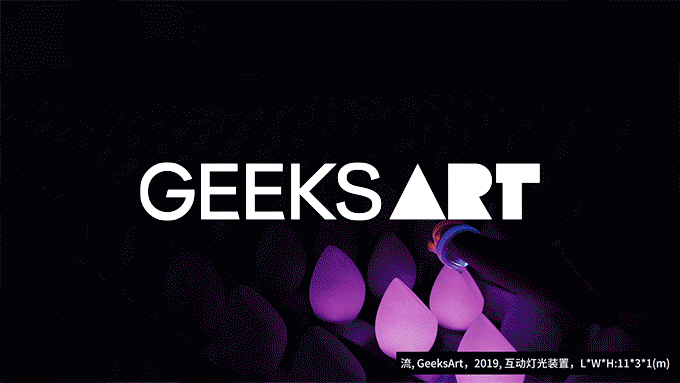凡物是法国创立的服装品牌COMMUNS对于空间以及器物审美的延伸;设计之初,主理人Seth与相识十余年的建筑师张家赫意在强调空间设计,呈现出一个东方人视角下从东欧到南美,从西亚再到北非等地游历世界的所见所闻。空间中的东西方融合状态,既展现了东方人对西方美学意境的理解,也反映着西方化的泛东方审美态度。
FANWU is founded as an extension of the spatial and object aesthetics of France fashion brand COMMUNS. At the outset of the design process, discussions between the director of FANWU Seth and architect Zhang Jiahe who had known each other for over a decade, intended to emphasize the significance of spatial design. Their aim was to portray a journey through the world from an Eastern perspective, spanning from Eastern Europe to South America, and from Western Asia to North Africa. The fusion of Eastern and Western elements within the space not only presents Eastern interpretations of Western aesthetic sensibilities but also reflects a Westernized pan-Eastern aesthetic attitude.
▲一层室内概览©立明
凡物主理人Seth不仅是一位服装设计师,也是一位周游世界的旅行者和收藏家。他对于凡物·FANWU的设想,不仅需要体现东西方文化的真正交融,还要将网罗世界各地期间所收藏的物件更好地呈现。建筑师张家赫更认为,如果浅显地将东西方融合直接地表达,容易留于东西方文化符号元素的堆叠,从而陷入一种混乱无序的状态。
Seth, the founder of “FANWU,” is not only a fashion designer but also a globetrotter and collector. His vision for “FANWU” requires not only a genuine blend of Eastern and Western cultures but also a greater presentation of objects collected from around the world during his travels. Architect Zhang Jiahe also believes that if the fusion of Eastern and Western elements is expressed too simplistically, it could easily lead to a mere accumulation of cultural symbols from both sides, resulting in a chaotic and disorderly state.
建筑师从众多藏品器物中留意到一些结构精巧的古董的木柜,柜门之后暗藏许多机关:有抽屉,有暗盒。由此他不禁联想,为什么建筑空间不能像收藏柜般,收藏下不同文化和时间的器物。从而,凡物·FANWU被构想成了一个充满机关的收藏柜,这样既不会产生浮于表面的符号堆砌的焦虑,亦可随时更换柜中的收藏。
Among the numerous collected objects, the architect noticed intricately structured antique wooden cabinets with mechanisms behind their doors, such as drawers and hidden compartments. This prompted him to wonder if architectural spaces could be like cabinets of curiosities and housing objects from different time and cultures. Thus, “FANWU” was conceived as a wonder-room filled with hidden mechanisms, ensuring that there wouldn’t be an overwhelming anxiety stemming from superficial symbol stacking, and allowing for the collection within the cabinet to be changed at any time.
▲收藏柜 ©立明
01 时间拼贴
01 Time Collages
项目选址于上海市中心的一幢三层老洋房中,设计将整个一二层视作巨大储物柜,立体化展现着主理人游历世界的见闻和物件,亦是空间概念的灵魂所在。丰富的材质肌理包覆简约的几何结构,让整体的视觉平衡。顺应墙体设计并设置灵活结构,翻转、推移…使得柜子可满足多种使用情境。立柜中的每一格安置隐藏式光源,方便展示照明。漫游空间,像走入结构精巧的古董木箱中,可移动的机关设计则让观赏旅途充满惊喜。
The project is located within a three-story historic townhouse in the heart of Shanghai. The design conceptualizes the entire first and second floors as a vast storage cabinet, three-dimensionally showcasing the owner’s worldly experiences and collected items. This concept forms the essence of the spatial design. The juxtaposition of rich material textures envelopes the minimalist geometric structure, achieving a harmonious visual balance. Flexible structures were integrated into the wall design, allowing for rotation, shifting, and adapting to various usage scenarios. Each compartment within the neutral-toned cabinets houses concealed lighting sources for convenient display.Navigating through the space feels like stepping into a intricately crafted antique wooden chest. The movable mechanisms in the design create an element of surprise, infusing the experience with a sense of wonder.
▲分析图©VANISHED Design
空间中的拼贴手法立体演绎着中古储物箱的修补痕迹。老木板、大理石和皮革等材质并存交织,材质肌理拥有各异的面貌,同时又相互连接。抽象来看,丰富的材质也是主理人丰富的游历缩影。
The collage technique used in the space translates the repair marks found on medieval storage chests into a three-dimensional interpretation. A fusion of aged wood, marble, leather, and other materials intertwines, with each texture displaying a unique face while remaining interconnected. Abstractly speaking, the diverse range of materials serves as a condensed representation of the owner’s extensive travels.
▲空间一角©立明
为了恢复房子原始的使用痕迹,首先将内部原有的二次装修全部拆除,露出原本的砖石墙面和木结构。接下来把结构和早已渗水的墙面进行加固修复,并重新布置了水电线路,最后将木梁、楼板、窗框和楼梯等最原始的结构进行打磨与上蜡保护。
In order to restore the original traces of the house’s use, the interior’s previous renovations were entirely removed, revealing the original brick walls and wooden structure. Following this, the structure was reinforced and the water-damaged walls were repaired. Electrical and plumbing lines were rearranged, and the most primitive elements such as wooden beams, floorboards, window frames, and stairs were polished and waxed for protection.
▲空间的拼贴 ©立明
02 几何穿行
02 Geometric Passage
储藏柜的精巧结构则化作空间中的几何体块穿插,走进空间像是穿梭在不同的分格中。入门庭院处,烧杉板的内敛细腻与彩色玻璃的张扬强烈,冲撞出凡物·FANWU特有的叙事视角,跳脱特定风格与陈规,材质与体块之间自由流动。
The intricate structure of the storage cabinet translates into geometric blocks interwoven throughout the space, creating a sensation of navigating through distinct compartments. Upon entering the courtyard, the understated refinement of the burned cedar planks contrasts boldly with the vibrant colored glass, giving rise to the unique narrative perspective of FANWU. This approach transcends specific styles and conventions, allowing for a free flow of materials and spatial elements.
▲入口庭院的烧杉板©立明
▲入门细部©立明
顺着动线入内,阳光透过彩色玻璃,如滤镜般向内投射斑斓。庭院地砖延伸至内,当门打开,内外开放而通透。裸露的木质天花,将空间的时间性袒露,与来者坦诚相待。木横梁之下,石材与木柱结合的长桌,作为陈列区。长桌后方绿色大理石材似背景墙,并设有搁板,辅助陈列展示。
Following the circulation path indoors, sunlight filters through the colored glass, casting a kaleidoscopic projection inward. The courtyard’s tile flooring extends into the interior space, creating an open and transparent transition as the door opens. The exposed wooden ceiling bares the temporal aspect of the space, fostering a sincere interaction with its visitors. Beneath the wooden beams, a long table crafted from a combination of stone and wooden pillars serves as a display area. Behind this table, a backdrop-like wall of green marble features shelves for additional display assistance.
▲彩色玻璃©立明
继续向里,绿色大理石体块作为陈列区内嵌入墙,与短墙形成穿插关系。尽头处的墙面延续绿色大理石,整块解构为分散的几何图形,拼贴式点缀空间。
Continuing further inside, a block of green marble is embedded into the wall as part of the display area, creating an interplay with a shorter wall. The green marble on the far end of the space carries on this theme, deconstructed into scattered geometric forms that punctuate the space in a collage-like manner.
▲绿色大理石©立明
03 梦境周游
03 Dreamlike Odyssey
上至二楼的楼道墙面铺陈老木板,指引动线。看似无章法的拼贴设计,赋予空间奇异的故事性,如同梦境周游。整个二楼空间通过布局与陈设构建日常生活场景,柔和暖光更为整层空间镀上油画般的朦胧质感,客厅、餐厅、洗手间… 如同现实中的平行世界。
The walls of the hallway leading up to the second floor are adorned with aged wooden planks, guiding the circulation path. The seemingly unordered collage design imparts an uncanny narrative quality to the space, akin to a dreamlike journey. The entire second-floor space is curated and arranged to construct scenes of everyday life. Soft, warm lighting bathes the entire level in an ethereal, painterly ambience, where the living room, dining room, and bathroom create parallel worlds akin to reality.
▲楼梯©立明
▲陈列架©立明
靠窗处木质长桌椅陈列中古餐具,窗户边框点缀宝格丽大理石块面,窗边放置一本陈旧的相册,隐喻着中古物件的叙事性,也预示着空间充满故事与可能性。
By the window, a wooden table and chairs display antique tableware, while the window frames are embellished with fragments of Bulgari marble, adding a touch of elegance. An old photo album is placed by the window, symbolizing the narrative quality of vintage objects and foreshadowing the space’s richness in stories and possibilities.
▲复古木制餐桌椅©立明
凡物取自“平凡之物”,空间中随处蕴藏使用痕迹的材质让品牌理念具像化。跨越时空的对话发生在百年房屋与源自欧洲的中古建材中,营造出整体巨大中古储物箱的空间感知。
FANWU is derived from the concept of “ordinary things,” and the material traces found throughout the space embody the brand’s philosophy. The dialogue across time and space takes place between the century-old house and medieval European building materials, creating a spatial perception akin to a vast medieval storage chest.
▲客厅©立明
未来,随物件的更替,空间也将不断变化,从物到空间整体一以贯之的凡物美学,是流动的状态,一切的变化都将发生在一次次游历之中。而灵活的空间设计,得以一次次将游历之物悉心储藏。藏纳记忆与时间的无形储物柜,不局限于某一种固定的面貌,生活本身,即是非线性的叙事,周边的物件是最为忠实的记录者。
In the future, as objects are replaced, the space will continue to evolve. The consistent aesthetic of Fanwu from objects to the overall space represents a state of flow, where all changes occur within each journey. The flexible spatial design ensures that the journey’s souvenirs are carefully stored, creating an intangible storage cabinet for memories and time. This dynamic space isn’t confined to a fixed appearance; life itself is a nonlinear narrative, and the surrounding objects are the most faithful chroniclers.
▲洗手间©立明
▲平面图
项目信息——
项目名称:凡物·FANWU
项目地点:上海市南昌路
项目面积:270㎡
设计机构:VANISHED Design
设计时间:2022.7
完工时间:2023.3
项目摄影:立明
联系邮箱:vanishedesign@qq.com
小红书: VANISHED Design
文字:张家赫、杨两只
Project Information——
Project name:FANWU
Project location:Nanchang Road, Shanghai
Project area:270㎡
Design agency: VANISHED Design
Design time:2022.7
Completion time:2023.3
Photography:Liming
Contact E- mail: vanishedesign@qq.com
Xiaohongshu:VANISHED Design
Design description: Jiahe Zhang, Liangzhi Yang





































